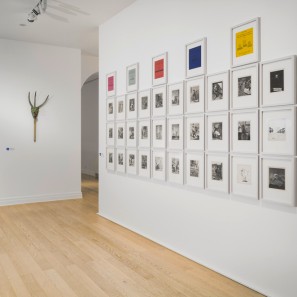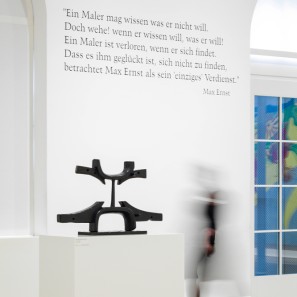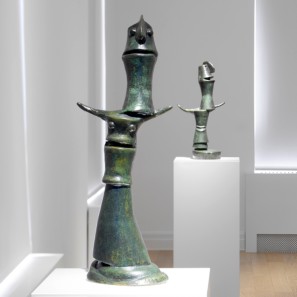Collection
Collection
The collection of the Max Ernst Museum Brühl of the LVR is dedicated almost exclusively to the oeuvre of Max Ernst and contains around 2040 exhibits. These include every medium in which the artist worked: drawings, collages, frottages, paintings, prints and sculptures. Paintings and lithographs by Max Ernst's fourth wife, Dorothea Tanning, further enhance the collection. Furthermore, the collection includes around 900 photographs by renowned photographers such as Man Ray, Henri Cartier Bresson, André Rogi and Lee Miller. The photos document Max Ernst's eventful life and display him as an artistic personality. The collection also contains numerous biographical documents of the artist. The collection is rounded off by publications on Max Ernst's work and issues of surrealist magazines, including copies of Minotaure and La Révolution Surréaliste.
The beginning of the collection marked a donation from Max Ernst himself to his native city of Brühl in 1969. The city's Max Ernst Cabinet, which was subsequently founded in 1980, expanded its holdings of prints and paintings.
A large part of today's museum collection consists of permanent loans from the Max Ernst Foundation. From 2001, this foundation consisted of the City of Brühl, the Kreissparkasse Köln and the LVR. The original collection of the Max Ernst Cabinet was transferred to the Max Ernst Foundation. The foundation expanded this collection with almost the complete graphic works and numerous photographs. The large collection of sculptures, which represents almost the entire sculptural oeuvre of Max Ernst, is on permanent loan to the Max Ernst Museum in the form of around 70 sculptures provided by the Kreissparkasse Köln. Particularly noteworthy is the large bronze sculpture Capricorne (1979), which the Nationalgalerie in Berlin is lending to the Max Ernst Museum.
The ‘D-Paintings’, another permanent loan by Kreissparkasse Köln, are the centrepiece of the museum. Max Ernst created this series of 36 birthday and romantic gifts over the course of his 34-year relationship with Dorothea Tanning.
In addition to the large collection of the Max Ernst Foundation and the Kreissparkasse Köln, the permanent exhibition also presents permanent loans from private collectors. Furthermore, the collection has been enriched by donations. The private collector Dr Peter Schneppenheim gave the painting The Twentieth Century (1955) to the Max Ernst Museum. The work Arizona Desert After Rain (ca. 1948) also found its way into the museum collection through a donation from Mr Waldemar Croon. Other works such as Paysage (1963) and Nocturne IV (1967) were also donated to the museum by the Max Ernst Society.


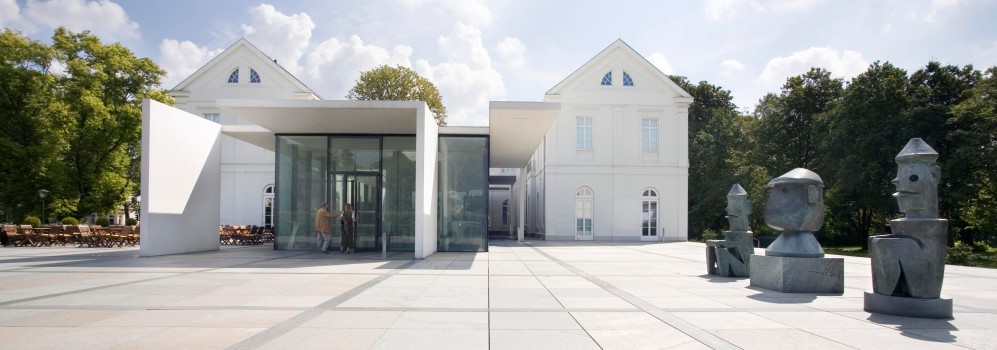
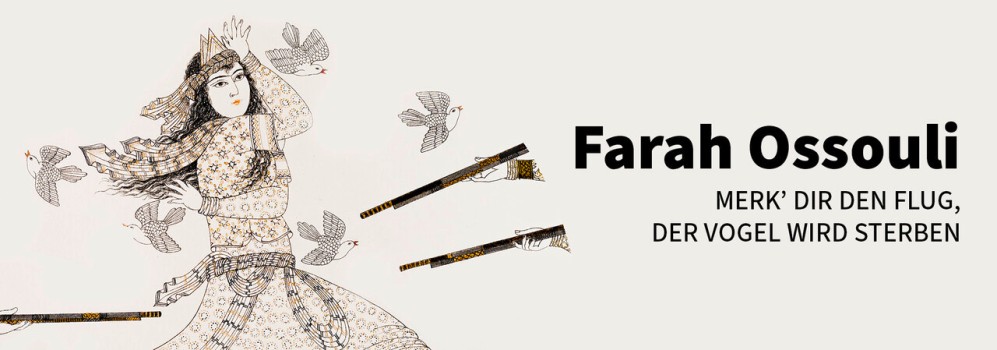
 Weiter
Weiter Zurück
Zurück Pause
Pause Start
Start